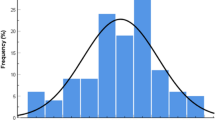Abstract
Qo inhibitor (QoI) fungicides are used to control gray blight caused by Pestalotiopsis longiseta in Japanese tea cultivation. However, field isolates of P. longiseta highly resistant to QoI fungicides were found in 2008, resulting in failure of QoI fungicidal control. This resistance was attributed to a mutation in the cytochrome b gene (cytb) in which alanine was substituted for glycine at position 143 (G143A). In 2009–2010, we detected field isolates that had an intermediate reaction between sensitive and resistant isolates in a preliminary assay. These isolates showed intermediate sensitivity to azoxystrobin and kresoxim-methyl on PDA plates. The intermediate reaction to azoxystrobin was also confirmed on detached tea leaves. Consequently, they were considered moderately resistant to QoI fungicides. Nucleotide sequencing of cytb showed that moderate resistance correlated with a single point mutation; leucine was substituted for phenylalanine at amino acid position 129 (F129L). Sequence analysis also revealed two types of cytb, with or without an intron between codons 131 and 132, in P. longiseta. F129L and G143A mutations were detected in both types of cytb according to their QoI resistance. This result suggests that G143A and F129L mutations have each occurred at least twice in the P. longiseta population.



Similar content being viewed by others
References
Anonymous (2011) Fungicide Resistance Action Committee. Species with QoI resistance. http://www.frac.info/frac/work/Species%20with%20QoI-resistance%202011.pdf. Cited 7 May 2012
Banno S, Yamashita K, Fukumori F, Okada K, Uekusa H, Takagaki M, Kimura M, Fujimura M (2009) Characterization of QoI resistance in Botrytis cinerea and identification of two types of mitochondrial cytochrome b gene. Plant Pathol 58:120–129
Barlett DW, Clough JM, Godwin JR, Hall AA, Hamer M, Parr-Dobrzanski B (2002) The strobilurin fungicides. Pest Manag Sci 58:649–662
Carbone I, Anderson JB, Kohn LM (1995) A group-I intron in the mitochondrial small subunit ribosomal RNA gene of Sclerotinia sclerotiorum. Curr Genet 27:166–176
Chen WJ, Delmotte F, Richard-Cervera S, Douence L, Greif C, Corio-Costet MF (2007) At least two origins of fungicide resistance in grapevine downy mildew populations. Appl Environ Microbiol 73:5162–5172
Fernández-Ortuño D, Torés JA, de Vicente A, Pérez-García A (2010) The QoI fungicides, the rise and fall of a successful class of agricultural fungicides. In: Carisse O (ed) fungicides. InTech, Rijeka, pp 203–220
Gisi U, Sierotzki H, Cook A, McCaffery A (2002) Mechanisms influencing the evolution of resistance to Qo inhibitor fungicides. Pest Manag Sci 58:859–867
Goddard MR, Burt A (1999) Recurrent invasion and extinction of a selfish gene. Proc Natl Acad Sci USA 96:13880–13885
Grasso V, Palermo S, Sierotzki H, Garibaldi A, Gisi U (2006) Cytochrome b gene structure and consequences for resistance to Qo inhibitor fungicides in plant pathogens. Pest Manag Sci 62:465–472
Ishii H, Fraaije BA, Sugiyama T, Noguchi K, Nishimura K, Takeda T, Amano T, Hollomon DW (2001) Occurrence and molecular characterization of strobilurin resistance in cucumber powdery mildew and downy mildew. Phytopathology 91:1166–1171
Ishii H, Yano K, Date H, Furuta A, Sagehashi Y, Yamaguchi T, Sugiyama T, Nishimura K, Hasama W (2007) Molecular characterization and diagnosis of QoI resistance in cucumber and eggplant fungal pathogens. Phytopathology 97:1458–1466
Jiang J, Ding L, Michailides TJ, Li H, Ma Z (2009) Molecular characterization of field azoxystrobin-resistant isolates of Botrytis cinerea. Pestic Biochem Physiol 93:72–76
Kim YS, Dixon EW, Vincelli P, Farman ML (2003) Field resistance to strobilurin (QoI) fungicides in Pyricularia grisea caused by mutations in the mitochondrial cytochrome b gene. Phytopathology 93:891–900
Nielsen H, Johansen SD (2009) Group I introns: moving in new directions. RNA Biol 6:375–383
Omatsu N, Tomihama T, Nonaka T (2012) Incidence of strobilurin- and benzimidazole-resistant strains of Pestalotiopsis longiseta, causal agent of gray blight, and practical control in tea field of Kagoshima Prefecture (in Japanese with English summary). Jpn J Phytopathol 78:3–9
Pasche JS, Wharam CM, Gudmestad NC (2004) Shift in sensitivity of Alternaria solani in response to QoI fungicides. Plant Dis 88:181–187
Pasche JS, Piche LM, Gudmestad NC (2005) Effect of the F129L mutation in Alternaria solani on fungicides affecting mitochondrial respiration. Plant Dis 89:269–278
Sierotzki H, Frey R, Wullschleger J, Palermo S, Karlin S, Godwin J, Gisi U (2007) Cytochrome b gene sequence and structure of Pyrenophora teres and P. tritici-repentis and implications for QoI resistance. Pest Manag Sci 63:225–233
Tomihama T, Nonaka T, Omatsu N, Nishi Y (2009) Occurrence of QoI resistance in Pestalotiopsis longiseta, the pathogen causing gray blight disease in tea plants (in Japanese). Kyushu Pl Prot Res 55:83–88
Torriani SFF, Brunner PC, McDonald BA, Sierotzki H (2009) QoI resistance emerged independently at least 4 times in European populations of Mycosphaerella graminicola. Pest Manag Sci 65:155–162
Watanabe H, Kuwabara K, Tsueda H, Horinouchi H, Ishii H (2009) Occurrence of azoxystrobin-resistant Passalora fulva pathogen of tomato leaf mold (Abstract in Japanese). Jpn J Phytopathol 75:247
Watanabe H, Kuwabara K, Tsueda H, Horinouchi H, Kageyama K, Ishii H (2010) Sequence analysis of cytochrome b gene in azoxystrobin-resistant isolates of Passalora fulva, the pathogen of tomato leaf mould (Abstract in Japanese). Jpn J Phytopathol 76:58
Yamada K, Sonoda R, Yoshida K (2010) Monitoring method for QoI sensitivity of Pestalotiopsis longiseta (in Japanese). Tea Res J 109:73–78
Author information
Authors and Affiliations
Corresponding author
Additional information
The nucleotide sequence data reported are available in the DDBJ/EMBL/GenBank databases under accession numbers AB713421–AB713426.
Rights and permissions
About this article
Cite this article
Yamada, K., Sonoda, R. Characterization of moderate resistance to QoI fungicides in Pestalotiopsis longiseta and polymorphism in exon–intron structure of cytochrome b gene. J Gen Plant Pathol 78, 398–403 (2012). https://doi.org/10.1007/s10327-012-0404-8
Received:
Accepted:
Published:
Issue Date:
DOI: https://doi.org/10.1007/s10327-012-0404-8




